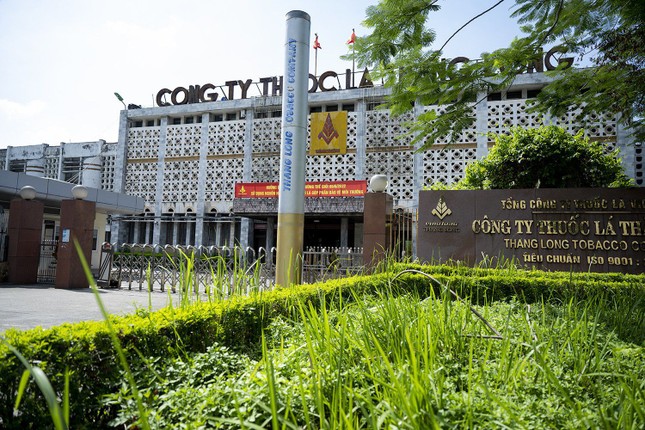According to the plan for rearranging administrative units at the commune level in the period of 2023-2025 proposed by Hanoi People’s Committee to the Ministry of Home Affairs, the city will have 67 wards and communes which guarantee the natural area and population scale for rearrangement but also have specific characteristics. Therefore, the People’s Committee proposes that these localities will not be merged in the coming period.
Specifically, Hanoi names several wards as key areas in national defense such as: Phuc Xa, Dien Bien, Quan Thanh, Lieu Giai, Doi Can, Ngoc Ha (Ba Dinh district); Hang Bot, Lang Ha, Nam Dong, Quang Trung (Dong Da district)…
Some localities have many historical and cultural relics or areas with special national relics, including the following wards: Vinh Phuc, Cong Vi, Giang Vo, Ngoc Khanh (Ba Dinh district); Khuong Mai, Phuong Liet, Khuong Trung (Thanh Xuan district)…

The Thang Long Cigarette Factory will be relocated to build a large-scale urban area.
Notably, in Thanh Xuan district, Thuong Dinh ward has many large factories such as Cao su Sao vang, Thang Long Cigarette Factory, Xa phong Ha Noi, which will be relocated. Hanoi People’s Committee said that after relocation, the urban areas will be built with an expected population of 46,000, reaching 306.7% of the standard.
In Thanh Xuan Trung ward, besides many universities and more than 2,500 business enterprises, the locality also has the Rang Dong Light Bulb Factory and Thuong Dinh Shoes, which will be relocated. After relocation, urban areas will be built with an expected population of 48,000, reaching 320% of the standard.
Hanoi has provided several other specific reasons to explain why these wards are not included in the rearrangement phase, including: complex population situation, isolated location, many small alleys in the area, concentration of central hospitals or universities…
According to Hanoi People’s Committee, Hanoi People’s Committee has developed an overall plan for rearranging district-level and commune-level administrative units in the period of 2023-2025, ensuring the principles and regulations of the Central Government. In which, it has considered and evaluated carefully many aspects, being suitable with the practical situation of each locality, the overall nature of the capital city, such as: The rearrangement process must preserve the traditional, historical, and cultural characteristics that are associated with the traditional formation and development of the capital city; The rearrangement process must be scientifically calculated, reasonable, in accordance with current planning and future development trends, especially being suitable with the orientation and speed of urban development, transport infrastructure in the future; creating favorable conditions for labor, production, work, and activities of the people; cautiously considering the key criteria and important criteria for national defense and security in some administrative units that have a significant impact when rearranging administrative units. The organizing process must create unity and consensus of the people… The overall plan has been carefully solicited opinions at local and grassroots levels, being agreed upon by the Standing Committee of the Municipal Party Committee, the Steering Committee for the rearrangement of administrative units, and the Party Leadership Board of the Municipal People’s Committee to unify the Plan to submit to the central authorities.
Hanoi People’s Committee asserts that, based on the current development situation, the historical and cultural factors of the communes do not meet the regulations on natural area and population scale; compared with the current regulations, the rearrangement of commune-level administrative units in the period of 2023-2025 is based on scientific grounds; ensuring accurate, objective, and legal compliance of data.





































